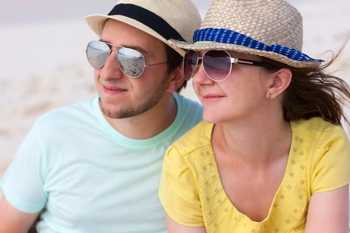Intentional UV Tanning
Intentional UV tanning means exposing your skin to ultraviolet (UV) rays for the purpose of making your skin darker. When the UV rays come from the sun, this behavior is called outdoor tanning. When the UV rays come from a tanning bed, booth, or sunlamp, it is called indoor tanning.
Any change in skin color after UV exposure (whether it is a tan or a burn) is a sign of injury, not health. UV rays from the sun and indoor tanning devices can damage the skin. In response to that damage, the skin makes more melanin, the pigment that gives skin its color, causing it to darken.
Intentional UV tanning does not include the use of cosmetic products such as sunless tanners and bronzers that are designed to make a person look tanned without going out in the sun or using artificial sources of UV rays.
Dangers of Tanning
Too much exposure to UV rays can cause skin cancers including melanoma (the deadliest type of skin cancer), basal cell carcinoma, and squamous cell carcinoma. UV exposure also can cause cataracts and cancers of the eye (ocular melanoma). Every time you tan, you increase your risk of getting skin cancer.
Tanning Is Not a Safe Way to Get Vitamin D
Although it is important to get enough vitamin D, the safest way to do so is through what you eat. Tanning harms your skin, and the amount of UV exposure you need to get enough vitamin D is hard to measure because it is different for every person and also varies with the weather, latitude, altitude, and more.
Sun Safety
You can spend time outdoors without increasing your risk for skin cancer by following these sun safety tips—
- Stay in the shade, especially during midday hours.
- Wear a wide-brimmed hat, sunglasses, and protective clothing.
- Use broad-spectrum sunscreen with a sun protection factor (SPF) of 15 or higher.
Research
Outdoor Tanning
Recent research found that nearly 10% of adults in the United States tanned outdoors frequently. Frequent outdoor tanning was more prevalent among women (11%), non-Hispanic white people (12%), those between 18 and 29 years of age (14%), those who had not graduated from high school (13%), and residents of the northeast United States (13%).
Indoor Tanning
Earlier research found that indoor tanning is decreasing in the United States, but nearly 10 million adults still tan each year. The percentage of adults who tan indoors went down from about 6% in 2010 to about 4% in 2013. Newer research found that the percentage of high school students in the United States who tan indoors fell from nearly 16% in 2009 to about 7% in 2015.
- Page last reviewed: July 24, 2017
- Page last updated: July 24, 2017
- Content source:
- Maintained By:


 ShareCompartir
ShareCompartir
